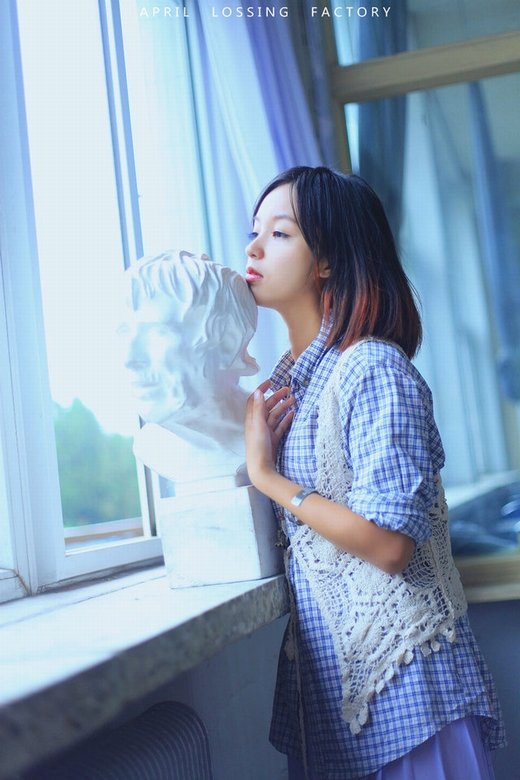
南岳衡山的导游词四百字
大家好,我是你们的导游——王导,今天就由我来给大家讲解颐和园的风景名胜。
请大家随着我走。
现在,我手指的这个是著名的长廊。
这个长廊可不一般。
它全长700多米,分成273间。
大家可以看到,每间的横槛上都有许多五彩图画,画得各式各样,有人物、花草、风景,几千幅画没有哪两幅是相同的。
难怪被称为“世界第一廊”。
大家往前看,这就是碧波荡漾的昆明湖。
这片湖静得像一面镜子。
游船经常从这里经过,大家可以听到船上游人们的欢歌笑语。
在昆明湖的上面,就是闻名遐迩的万寿山。
站在这里,我们可以看到颐和园的全部风景。
站在这里看,整个颐和园真可谓是无比壮观。
郁郁葱葱的树丛掩映着黄的绿的琉璃瓦屋顶和朱红的宫墙。
一座八角宝塔形的三层建筑耸立在半山腰上,黄色的琉璃瓦闪闪发光,这就是古香古色的佛香阁。
大家快随我看看这美丽的石桥吧
这座石桥有17个桥洞,叫十七孔桥。
桥栏杆上有上百根石柱,柱子上都雕刻着姿态不一的活灵活现的小狮子。
这座在历史上为帝王建造的古典园林,现已成为中国最著名的旅游参观热点之一,每年接待游客数百万人。
1986年,颐和园被联合国教科文组织列为世界文化遗产。
大家听了我的介绍,也心动了吧
那就亲自到颐和园看看吧
我需要一份关于解说“归元寺”的导游词
中英文如下: 归元寺英文导游词 Guiyuan Temple Chinese Buddhist temples are never single buildings. They always consist of a group buildings following a fundamental patter, which can, however, be modified. The main buildings and their symmetrically corresponding secondary buildings form individual groups and courtyards. The entire temple complex is spacious. The building inside the complex are usually single-storied and the main halls are sometimes decorated with a double roof. The towers, pavilions and halls can be multi-storied structures. The Chinese temple complex has been subject to great structural changes throughout the centuries. But temple architects follow the basic principles of secular structures from the Tang Dynasty onwards. The complexes stand on a central axis, usually a north-south axis: east-west only as an exception. (Guiyuan Temple is just the very exception.) The main buildings are strung along this central axis, their broadest sides facing south or east. The most important and most frequently presented building inside a Buddhist temple complex are the main entrance gate, the bell and drum towers, the Hall of the Heavenly Kings, the Hall of the Buddha and a pagoda. Buddhism is said to be founded in India in the 6th century BC by Siddatha Gautama (BC565 –BC486), the son of a nobleman and member of the Kshatriya caste near the present borders of India and Nepal. Buddhism advocates that all the people are created equal and turns against the caste system of Brahmanism, so it was popular with the common people. It was said that Buddhism was spread to China in 2 BC. At the beginning, it was only regarded as a kind of witch. About 200 AD, Chinese version of Buddhist s criptures began to appear, and thus, Buddhist doctrines began to emerge with traditional Chinese religious thought. From 2nd century to late 6th century, translation and research of Buddhist sects with Chinese characteristics were becoming more and more popular and many temples were built, which reached its peak in Sui Dynasty (581AD-617AD) and Tang Dynasty (618-907). Some Buddhist sects with Chinese characteristics came into being. Buddhism exerts a great influence on Chinese philosophy, literature, art and folk customs. What is presented before our eyes is a copper statue of a famous bodhisattva in Hynayana Buddhism. Bodhisattva is a tittle which is only next to Buddha. This statue is the image of Avalokitesvara, which has been popular with Chinese people or more than 1,000 years. She is called the Goddess of Mercy cordially by Chinese and is regarded as the symbol of kindness, mercy and benevolence. When we visit the Avalokitesvara Pavilion after a while, I will give a detailed introduction about her. This copper statue was sent to Guiyuan Temple by Taiwan Buddhists in September 1990. It shows that all Chinese, whether in the mainland or in Taiwan, are eager for the reunion of the country, even including religion believers. The building we see now is the Buddha Hall where one certain Buddha and his two assistant bodhisattvases are worshiped. This Buddha is Amitabha Buddha. Amitabha means incomparable brightness. According to Buddhism, time and space is limitless and thus there are many many Buddhas in different spaces and times. But in a certain space or in a certain period of time, there is only one certain Buddha who is in charge of instructing all living creatures. Amitabha Buddha is the Buddha who presides over the Land of Ultimate Bliss in the west, which will come in the future. Buddhist s criptures describe the Land of Ultimate Bliss as a wonderland, in which no pain exists and the people enjoy their lives. In one word, it’s very attractive. Some people will think it must be very difficult to enter such a world. How can I go to such a paradise? Maybe I have to work hard and bear a lot of sufferings. In fact, it’s very easy to enter the world. He only need often murmur ‘May Buddha preserve us’ sincerely. It’s enough. You see, the statue in the middle is the very Buddha. On his left is the Goddess of Mercy. On his right is the other bodhisattva who follows the Buddha. It is said that he can save all the living creatures from three kinds of terrible disasters. Now, let’s step into the Buddhist s criptures Pavilion where the s criptures of Buddhism are kept. But I ‘m afraid what attracts our attention at the first sight must be this snow-white statue. It is a statue of Sakyamuni, the founder of Buddhism. This statue was carved out of a big piece of jade which is 2-meter-tall and weighs 3 tons. It was carved by Myanmar handicraftsmen and donated to the temple by the Rangoon Buddhists in 1935. If we watch the statue, we may sense that the peaceful expression on the Buddha’s face has brought us to a quiet and harmonious state. The last building we will visit is the Avalokitesvara Pavilion in the north yard. When we entered the yard just now we saw a statue of her. Now I’d like to introduce her carefully. As a goddess, she swore that she would not become a Buddha until all the living creatures suffering from pains were saved. So she became a bodhisattva who is most popular among the people and attracts the most believers of all the gods and goddesses in Buddhism. It was said that one would be saved from trouble and disaster as long as he (she) chanted her name and if it was heard by her. Thus she is called Guanshiyin, which means ‘hearing or looking on the voices of the suffering’. Because of her kind heart and benevolence she got another title ‘the Goddess of Mercy’. According to Buddhism, bodhisattvases have no distinction of sex, that is, they are neither male nor female, because they are immortals. But it’s very strange and interesting that most of bodhisattvases were engraved or carved in the images of various kinds of men in human society. Changes didn’t take place until an emperor’s mother thought it was inconvenient to worship a male bodhisattva in her bedroom. From then on, Guanshiyin, the bodhisattvas began to appear before her believers in the image of a beautiful and elegant lady. We’ll pay a visit to a very serious, sacred place. Generally, the place is regarded as the most holy by Buddhists. It is the Grand Hall, where the founder of Buddhism, Sakyamuni is worshiped. It is always the center of a Buddhist temple in construction and in Buddhists’ mind. The statue in the middle is Sakyamuni. According to Buddhism his mother gave birth to him in a garden. He belonged to Kshatreya Caste. He married his cousin when he was 16 or 17 years old. At the age of 29, he was confronted with the sights of an old man, a sick man, a corpse, and a wandering ascetic. With eyes opened to aspects of life newly revealed to him, he broke from the material world and became an ascetic. Six years later, he gave up mystic concentration that at last brought him enlightenment under a bo tree. He then founded an order of mendicants and spent his next 45 years preaching his ideas until his death. These two statue beside the Buddha are his two disciples. The one on the right was said to be Sakyamuni’s cousin and he had good memory so that he could remember all the Buddha told his disciples. The one on the left was said to be the lord of Brahmnism and he once was Sakyamuni’s tutor. But afterwards he was convinced by Buddhism after long-term debate between Buddhism and other religions and he accepted Sakyamuni as his tutor. Thus he became the eldest one of all Sakyamuni’s disciples. Next, we’ll pay a visit to the Ahrat Hall in the south court. The Ahrat Hall is an important structure in a Buddhist temple. But not all temples have an Ahrat Hall, especially, well-kept Ahrat Halls are very rare in China. This one is among them, and what’s more, it has its own unique characteristics. Generally, an Ahrat Hall is a square building. The building is subdivided into four small square courts so that the hall can get enough sunlight. This kind of structure show some lucky implies in Chinese Buddhist culture. Another characteristic about the hall lies in these sculptures themselves. They were neither made up of wood, nor stone, nor clay. A special way was taken in making them, which could prevents them from being burned, being soaked or being eaten by insects. All the sculptures were floating in water while Wuhan was flooded in 1954, but, surprisingly, they were sound and safe after the flood had receded. It was really a wonder. Ahrats are the immortals in Buddhism. But when you have a look around the sculptures, you may find from the expressions on their faces that they are so familiar to you. That’s only because they were molded on the basis of the people in the reality, so they are human beings in our daily life rather than immortals. Ahrats are the symbols of harmony, happiness, and good luck, so the Wuhan natives have got used to counting ahrats since ancient time to pray for peace. There are a few ways of counting ahrats. We can count from the first ahrat from left to right or from right to left, when we just enter the hall. We can also choose any ahrat as our starting point, and count in the same way, left to right or right to left. We should base counting on our own ages whatever we take. For example, I’m 25, so I should stop in front of the 25th ahrat from the starting ahrat. The sculpture in front of which I stop is my lucky ahrat. My lucky ahrat will accompany me to spend a peaceful and lucky year. Wouldn’t you like to have a try now? If you need, I can explain connotation of some ahrats. That’s all for the explanation to Guiyuan Temple. Thank you for your cooperation and understanding. You will have another 30 minutes to have a look around the temple. If you have any problems, do let me know. I would like to repeat our bus number, A3074. Please don’t forget. See you later. 各位游客朋友们: 我代表我们××旅行社欢迎大家的到来。
我姓张,大家就叫我小张好了
就好像人们常说的那样,相逢就是缘分。
能和大家相逢在美丽的江城武汉并和大家一起度过这段美好的时光,我感到非常荣幸。
这位是我们的司机倪师傅,驾驶经验非常丰富,所以各位在旅游途中可以放心地欣赏窗外武汉的美景。
今天就由我们两个为大家服务,大家有什么问题可以尽管提出来,我们将尽力为您解决。
希望能用我们的热心、耐心和细心换来你的放心、开心。
归元寺 归元寺位于武汉市内,是清顺治十五年(1658)浙江僧人白光、主峰来此创建的。
1983年被国务院确定为汉地全国重点佛教寺院。
现为湖北省佛教协会和武汉市佛教协会的所在地。
这里古树参天,花木繁茂,泉清水绿,曲径通幽,是“汉西一境”。
归元寺由北院、中院和南院三个各具特色的庭院组成,拥有藏经阁、大雄宝殿、罗汉堂三组主要建筑,占地面积17500多平方米。
北院的主要建筑是藏经楼,是一座两侧五开间的楼阁式建筑,高约25米,顶为大脊,鱼角搬爪,飞栱飞檐,古朴玲珑;当面为四柱通天,双凤朝阳,五龙戏珠。
整个建筑精巧壮观,金碧辉煌。
这里藏有许多佛教文物,除藏经外,还有佛像、法物、石雕、书画碑帖及外文典籍,是国内收藏佛像较多的一个佛寺。
1935年太虚法师出访缅甸时,仰光的佛教徒赠他一尊1吨多重的玉石雕成的释迦牟尼佛像,就供奉在这里。
这种佛像在我国只有三尊,其他二尊分别列供于北京和上海。
藏经阁里收藏的佛经有:清代《龙藏》一部,宋代影印本《碛砂藏》一部,清末民初上海印《频伽藏》一部。
另外还有两件珍品:一是清光绪元年(1875),湖南衡山69岁老人李舜千书写的“佛”字。
“佛”字是在长宽不超过6寸的纸上,由《金刚经》和《心经》原文共5424个字组成。
每个字只有芝麻大,肉眼分辨不清。
用30倍放大镜看,笔力挺秀,是书法珍品。
另一件是武昌僧人妙荣和尚刺血调和金粉抄成的《华严经》和《法华经》,字体娟秀,堪称精品。
中院的主体建筑是大雄宝殿。
该殿初建于清顺治十八年(1661),后经多次维修。
现大雄宝殿是清光绪三十四年(1908)重修。
大殿正中供奉着释迦牟尼坐像,两侧为其弟子阿难和迦叶像。
释迦偏袒左肩,结跏趺坐,庄严静穆。
佛像后背是用樟木雕刻而成的“五龙捧圣”的图案。
佛像前还有韦驮、弥勒、地藏像。
佛像后是一组海岛观音像。
只见海岛观音赤足站立,左右侍立着一龙女和童子,背后是一面高达八尺的泥塑悬崖峭壁,足下碧波万顷,怒涛汹涌。
整个塑像向前倾覆。
人们仰视上去,只见观音衣袖似在飘动,正在汹涌的波涛上迎面向你走来,增加了宗教艺术的感染力。
佛像前的供桌,是一件不可多得的木刻珍品。
供桌高4丈8尺,横阔1丈2尺,深宽2.5尺,前嵌垂栏,宽1.5尺,高0.6尺,其间分为五格,深画镂空。
图案描绘的是唐玄奘取经回长安时,君民夹道欢迎的场面:有唐僧、孙悟空、猪八戒、沙和尚等《西游记》人物,有李世民以下文武百官、侍卫、庶民百姓;有亭院殿墙,车马山水,幢幡宝盖,香炉蜡台等一应俱全。
综观全图,繁复活泼,盛况空前。
垂栏下沿为五龙云彩,周围匝绕,以四虎腿支地,生动有力。
相传这一樟木雕刻由十人历时一年才完成。
大雄宝殿前的韦驮殿内,供奉着一尊木雕韦驮像,身着铠甲,手持宝杵,威武挺立,用我国古代武将形象表达了古印度神话中“四大天王三十二将”之首的护法神形象。
这座木雕系用整块樟木雕成,线条刀法都是唐朝风格,是归元寺的艺术珍品,也是我国雕刻艺术品中的一件宝贵遗产。
归元寺属曹洞宗,又称归元禅寺,它与宝通寺、溪莲寺、正觉寺今称为武汉的四大丛林。
希望大家旅途愉快,谢谢。
岳麓山导游词
各位朋友:大家好!很高兴能陪伴大家一起游览岳麓山风景名胜区.位于长沙市面上湘江西岸的岳麓山,是南岳衡山七十二峰之尾,自古以来就是著名的胜景.岳麓册集名院、名亭、名寺、名宫、名泉、名木于一体,自然风光奇、珍、幽、美,人文景观独、特、亮、丽,清风峡、爱晚亭、麓山寺、白鹤泉、蔡锷墓、黄兴墓、禹王墓、云麓宫、岳麓书院等近百处景点,处处诱人。
现在,来到的是岳麓山的核心景区——清风峡。
这里林森繁茂,绿树成阴,溪涧绕流,三面倚峰,景色美中夹秀,令人陶醉。
从清风峡到山顶,保存了大量的原始次森林,共有植物977种,其中555种为野生种子植物,奇花异草,随处可见。
据专家统计,山中有许多古树名木,稀有濒危树种有皂夹、银杏等。
整个岳麓山上,树龄最大的是位于古麓山寺的一株罗汉松,距今已有1700多年的历史;其次是云麓宫旁边的古银杏,树龄超过1000年;季军则是古麓山寺前门的元代樟树,树龄在700年左右。
另外,在爱晚亭周围还有许多明清时期的枫树。
最有文化特色的当属岳麓书院里的古桑树和古槐树,因为古代人将读书的地方称为“桑槐之地”,因此院内遍栽这两种树木,形成了特有的植物文化。
据统计,长沙市的氧气供应量,有五分这一来自岳麓山的草木,真可以称得上是一座天然氧吧!101贝考导游证考试“山不在高,有仙则名;水不在深,有龙则灵。
”岳麓册虽然不高,但确是一座文化底蕴浓厚的名山,山上列为省级以上重点文物保护单位的就有15处。
麓山寺之古,岳麓书院之深,云麓宫之清,黄兴、蔡锷墓之烈,无不令人神往。
所以也有人称岳麓山为“人文名山”。
在清风峡口,高耸着中国中大名亭之一的爱晚亭。
爱晚亭始建于清朝乾隆五十七年,即公元1972年,创建者是当时的岳麓书院山长、大学者、教育家罗典。
过去,清风峡中遍布枫林,所以罗国营企业定亭名为“红叶亭”,又叫“爱枫亭”。
后来湖广总督毕沅觉得这里的景色十分切全诗人杜牧的那首诗《山行》,就更名为“爱晚亭”了。
远上寒山石径斜,白云深处有人家;停车坐爱枫林晚,霜叶红于二月花。
的确,到了晚秋时节,岳麓山山顶云雾缭绕,爱晚亭四周枫叶红如火、艳丽如炽,将诗中的意境表现得淋漓尽致。
现在,可以看到爱晚亭的全貌了。
它坐西朝东,四周山峦耸翠、怪石嶙峋,左右溪漳环绕,山、树、溪、石各展风流。
爱晚亭是一座典型的中国古典攒尖顶亭子。
它有两套顶棚,称为“重檐”,显得气垫雄浑;它的屋顶采用四条斜脊,称为“四披”,表现稳重端庄之美;攒尖顶使得亭子有一种向心的凝聚力。
这些都是中国传统文化中重“理”、重“立身”、重“中庸”、重“大一统”等儒家思想在古建筑学上的体现。
同时,亭子的檐角呈反凹曲线向上飞翘,使原来厚重下沉的有了一种活泼、飘逸的感觉。
加上丹柱碧瓦、白玉护栏和彩绘藻井,全面展现了这座百年名亭的古朴之美。
爱晚亭既是名胜古迹,也是革命圣地。
同志青年时期在湖南第一师范求学的和工工作期间,经常同蔡和森、罗学瓒、张昆弟等挚友一起登临爱晚亭,“指点江山,激扬发字”,有时甚至通宵达旦。
当时的新民学会成员周世钊老人回忆这段时光曾经赋《踏莎行·秋日游爱晚亭》一首:碧涧鸣琴,红林供画,一山秋色多潇洒。
为寻旧迹上芳亭,早接英风忆黉舍。
身在山中,心忧天下,凭栏熟计连朝夜。
菜根为饭草作鞋,要将历史从头写。
正因如此,1952年重修爱晚亭时,当时的湖南大学样长李达请毛主席为亭题名,毛主席欣然提笔写下了“爱晚亭”三个大字,就是现在亭子门楣上的这块匾。
大家现在看到亭术上有副对联:“山径晚红舒,五百夭桃新种得;峡云深翠滴,一双驯鹤待笼来。
”这是爱晚亭的修建者罗典所题,表现的是爱晚亭当年的风姿。
长沙市与日本鹿儿岛市结为友好城市时,爱晚亭作为古城长沙的象征,仿建到日本,从而成为中日友好的信使。
如何写潮州八景之一的导游词作文
大家好,我是导游邵文灿。
今天,我要带领着大家一起到五岳之一的泰山观光。
泰山位于山东省南部的泰安市。
泰安市原名泰山市,泰山的名气很大,所以把泰山取名作为市名,像乐山所在地点叫乐山市一样。
泰山是五岳之首。
五岳分别为:东岳泰山 南岳衡山、中岳嵩山、西岳华山、 北岳恒山。
东岳泰山排名第一,高度(主峰离地面的距离)排行第三,大约1545米高,有“登泰山,小天下”之称。
有许多名人均登临泰山,如秦始皇 汉武帝 唐太宗 宋祖 乾隆。
据记载,泰山至今已经有二十亿年的历史。
超过云层,所以上面有较大的冷空气,冷的像寒冰一样直入骨髓。
如果你们很冷,可以到附近租一套皮棉袄。
天街不光冷,小吃也特别多。
泰山的小吃很有特色,如小米煎饼,这里的小米煎饼双酸双薄,又加了大葱、甜面酱、煎鸡蛋,用十里飘香这个词来形容再适合不过了。
天街的第三大特点就是――石碑特别多。
天街上石碑比泰山其它地方的石碑多5倍多。
天街最著名的石碑位于天街中部,这个石碑上面雕刻着十一个大字:“泰山世界文化与自然遗产”这个石碑是1987年11月19日雕刻的。
这个石碑表明了泰山是世界文化与自然遗产之一。
但是中国只有4处(2001年前),泰山是其中第三个命名的。
以我《我来当导游》为题写一篇介绍自己家乡的习作
各位游客:你们好 欢迎来到风丽的三,首先我给大家一下三清山的概况: 三清山位于酒杯东北部玉山和德兴交界处。
三清山因玉京、玉华、玉虚三峰峻拔,犹如道教所尊崇的玉清(元始天尊)、上清(灵宝道君)、太清(太上老君)三神列座其巅,并有古建筑三清宫而得名。
三清山地处亚热带气候区,却具有高山气侯的特征,年平均气温介于10-12℃之间,七月分平均气温21.8℃,年降水量平均2000毫米左右三清山四委景色绮丽秀美,融融春日,杜鹃怒入,百花争艳;春夏之交,流泉飞,云雾缭绕;三伏盛夏、浓荫蔽日,凉爽宜人;仲秋前后,千峰竞秀,层林飞染;三九严寒,冰花玉枝,银装素裹,宛如琉璃仙界。
三清山风景名胜区旅游资源丰富,规模宏林,种类齐全,景点众多,景区面积达220多平方公里,中心景区71平方公里,共分三清宫、梯云岭、三洞口、玉灵观、西华台、石鼓岭和玉京峰七个景区。
三清山东险西奇、北秀南绝,兼具“泰山之雄伟、华山之峻峭、衡山之烟云、匡庐之飞瀑”的特点,奇峰异石、云雾佛光、苍松古树、峡谷溶洞、溪泉飞瀑、古代建筑、石雕石刻具特色,维妙维肖,形态逼真。
接下来,我们就一处处游览以上的景点吧
三清山主峰玉京峰,海拔1817米。
景区总面积229平方公里,中心景区71平方公里,由梯云岭,三清宫等七大景区组成,1988年经国务院批准,成为国家风景名胜区神奇的三清山素有“江南第一仙峰,天下无双福地”的美誉。
它“东险西奇,北秀南绝”,兼有“泰山之雄伟,华山之险峻,衡山之烟云,匡庐之飞瀑”的特点。
尤以奇峰、古松、响云、彩瀑、神光最为奇特,可与黄山相媲美,誉为黄山姐妹山。
就了三清山竞相崛起的林立石峰。
这些石峰,劈地摩天,峥嵘瑰丽,经过大自然这位超级大师的精雕细刻,它们似乎都有了灵气,遂各自出现不同的神态和尊容,人们依据它们的造型,赋予它们贴切的名称,有的附上神话传说。
这里有三石峰依崖排列;状如三条蛟龙腾飞出海的“三龙山海峰”;有形如狐,前脚攀石偷窥,伏身待咬人的“狐峰”;有亭亭玉立于群峦之上,四面如削,峰巅滴翠凝脂,峰壁菖藤攀援,峰麓松柏葱茏,绿环翠结的“秀峰”;有一列石峰如一列叠折的屏风或高或低,绵延里许的“玉屏峰”;有座座石峰一字儿排开,中有两峰紧挨超然耸立,直插云天,形如大门的南天门峰。
有玉峰、城堡峰、二桥墩峰、三阳开泰峰、皇冠峰……这些天造地就的奇峰,构成了镶嵌在三清山百里“群雕”,这里大自然奉献给人们杰出的艺术珍品。
揽胜遍五岳,绝景在三清”是三清山风景优美的最好写照。
“不到南清游,不识三清山”。
今天,我将陪伴各位团友游览的就是三清山的南山。
特别要给大家介绍的是三清七奇峰之冠,被誉为举世“三绝”的“观音听琵琶”“巨蟒出出”、“女神峰”三座山峰。
三绝位于梯云岭景区。
如少女,丰满秀丽,高鼻梁,樱桃口,圆下马,秀女齐肩,正襟端坐,凝神沉思,又手托着两棵古松,意要将春色永驻人间。
那山峰深然似鬼斧神工,铸就了这尊艺术珍品——这就是我首先要向大家介绍的——一女神峰 相传,这位“女神”是三清山下采药老人的爱女,从小天资聪颖,心地善良,跟着父亲采药治病,为当地百姓不知做了多少善事,感动了三清神尊,被引渡成神,成为天皇一仙女。
一天,她在天宫发现玉帝召集几位文武天神,筹划如何将三清山石头全部调运天宫建造行宫,把三清山沦为大海,让百姓充当人鱼。
她大惊失色,为了拯救乡亲,她把个人安危之度外,想方设法,将天宫机密泄露给三清山的村民,并告诉他们如何才能避难。
三清山乡亲们按照女神的办法粉碎了玉帝的阴谋,避免了一场灭顶之灾。
可是,泄漏天机之事很快被玉帝查处,盛怒之下,把“女神”打入凡界,变成永远不会说话的石头人。
多少年来,这位女神任凭风吹雨打,雷轰电击,总是那样气度非凡,贤淑端庄地坐在这“南清宫”的玉台旁,凝视着人世间的变迁。
她每时每刻都在为人间世界默默地祝福,每时每刻都在向前来观光的游客奉献上一片温柔,一腔深情,一掬希望。
女神峰,是真、善、美的化身。
中国十大名胜古迹简介
中国十大名胜古迹是指1985由《中国旅游发起并组织全国人民经年多的评比,于当年9月9日评选出的万里长城、桂林山水、杭州西湖、北京故宫、苏州园林、安徽黄山、长江三峡、台湾日月潭、避暑山庄、西安秦陵兵马俑十个风景名胜区。
这十个景区分布于中国南北东西各个区域,包括自然景观,历史建筑,人文景观和文物古迹等。
桂林山水位置处广西壮族自治区东北部,南岭山系的西南部,以“山青、水秀、洞奇、石美”为主要特点。
桂林诸山虽都是石质山体,极少土质,但因为气候温和湿润,利于植物生长,加上桂林人非常注重石山绿化,故岩石缝隙间会顽强地生长出许多的灌木、乔木和藤类植物,将一座座石峰罩得严严实实的,显得青翠而富有生机。
桂林是典型的岩溶地貌。
桂林景色岩溶地貌的最重要特点就是在流水的长年侵蚀下,一方面会形成各种奇形怪状的洞穴,并不断地改变着形态,另一方面又会生长出各种不同的石笋、石幔、钟乳石,两者构成了奇妙的岩溶洞穴奇观。
杭州西湖位于浙江省杭州市西部, 杭州市市中心,旧称武林水、钱塘湖、西子湖,宋代始称西湖。
西湖处处有胜景,历史上除有“钱塘十景”、“西湖十八景”之外,最著名的是南宋定名的西湖十景”和1985年评出的“新西湖十景”。
在以西湖为中心的60平方公理的园林风景区内,分布着主在风景名胜40多处,重点文物古迹30多处。
概括起来西湖风景主要以一湖、二峰、三泉、四寺、五山、六园、七洞、八墓、九溪、十景为胜。
新西湖十景是1985年经过杭州市民及各地群众积极参与评选,并由专家评选委员会反复斟酌后确定的。
北京故宫,又名紫禁城,是明清两代的皇宫,位于北京市中心。
故宫东西宽750米,南北长960米,面积达到72万平方米,为世界之最;故宫的整个建筑被两道坚固的防线围在中间,外围是一条宽52米,深6米的护城河环绕;接着是周长3公里的城墙,墙高近10米,底宽8.62米。
城墙上开有4门,南有午门,北有神武门,东有东华门,西有西华门,城墙四角,还耸立着4座角楼,角楼有3层屋檐,72个屋脊,玲珑剔透,造型别致,为中国古建筑中的杰作。
黄山处于亚热带季风气候区内,由于山高谷深,气候呈垂直变化。
同时由于北坡和南坡受阳光的辐射差大,局部地形对其气候起主导作用,形成云雾多、湿度大、降水多的气候特点。
黄山还兼有“天然动物园和天下植物园”的美称,有植物近1500种,动物500多种。
黄山气候宜人,是得天独厚的避暑胜地,是国家级风景名胜区和疗养避暑胜地。
苏州园林有:拙政园、留园、网师园、环秀山庄、狮子林、怡园、沧浪亭、耦园、艺圃。
[4]作为苏州古典园林典型例证的拙政园、留园、网师园和环秀山庄,产生于苏州私家园林发展的鼎盛时期,以其意境深远、构筑精致、艺术高雅、文化内涵丰富而成为苏州众多古典园林的典范和代表。
长江三峡:中国长江上游瞿塘峡、巫峡和西陵峡的合称,简称三峡。
是中国10大风景名胜之一,也是中国40佳旅游景观之首。
长江三峡西起重庆奉节的白帝城,东到湖北宜昌的南津关,是瞿塘峡、巫峡和西陵峡三段峡谷的总称,是长江上最为奇秀壮丽的山水画廊,全长192公里,也就是常说的“大三峡”。
日月潭是台湾的“天池”,湖周35公里,水域9平方公里多,为全省最大的天然湖泊,也是全国少数著名的高山湖泊之一。
承德避暑山庄地处内蒙古高原与华北平原的过渡带,属温带大陆性季风型山地气候,四季分明。
冬天虽然寒冷,但由于四周环山,阻滞了来自蒙古高原寒流的袭击,故温度要高于同纬度其他地区;夏季凉爽,雨量集中,基本上无炎热期,是旅游避暑胜地。
关帝庙俗称武庙,位于避暑山庄丽正门西南侧宫墙外20米处,始建于清雍正十年(1732年),是中国唯一的皇家关帝庙。
秦陵兵马俑位于陕西省西安市临潼区东5公里处的骊山北麓,是中国历史上第一个皇帝秦始皇(公元前259年~前210年)陵墓的陪葬坑,被称为世界第八大奇迹之一。
秦始皇兵马俑陪葬坑,是世界最大的地下军事博物馆。
在兵马俑一号坑址上建成的拱形展厅,设立了“秦始皇陵兵马俑博物馆”,向中外广大旅游者开放。



